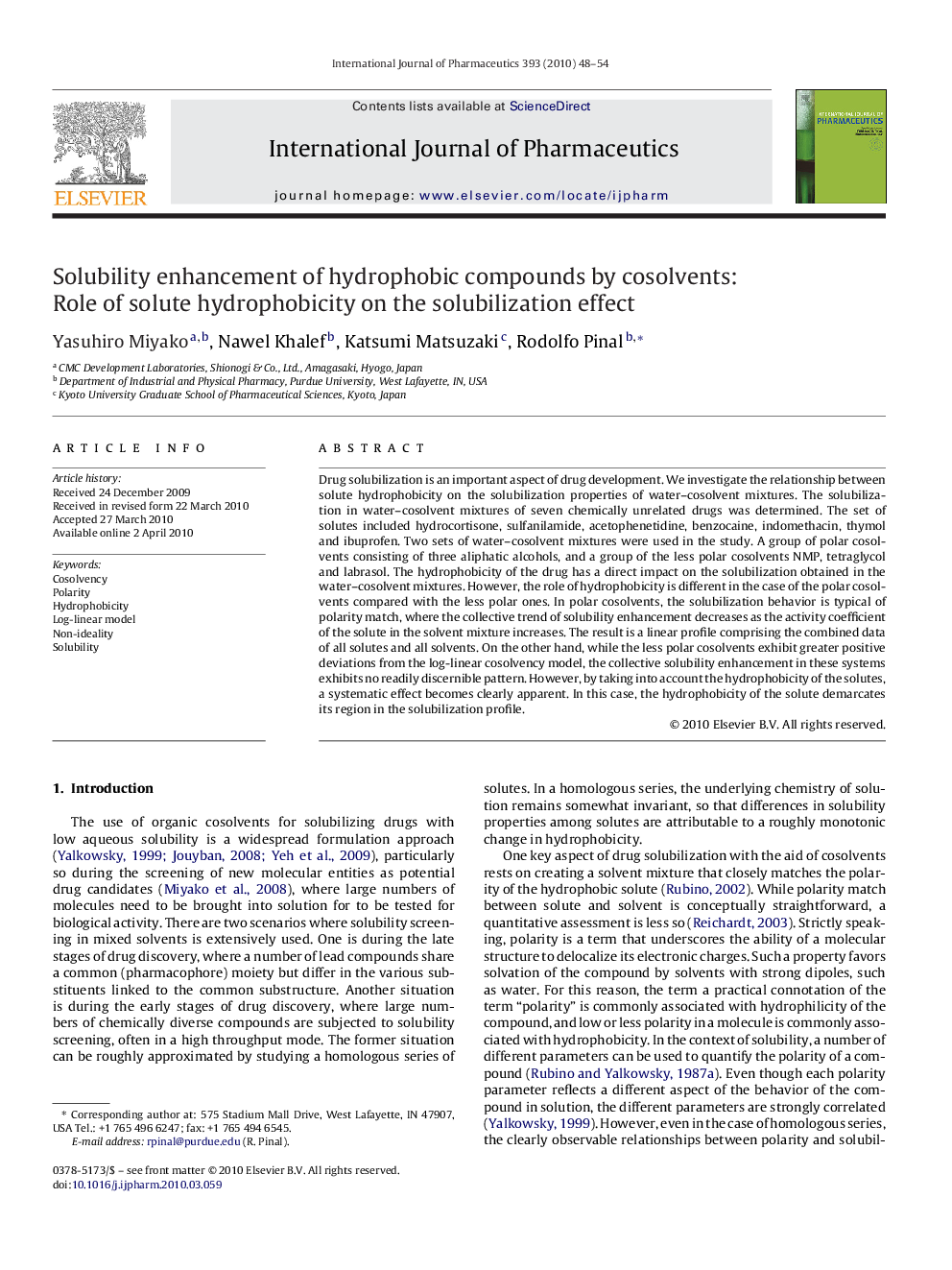| Article ID | Journal | Published Year | Pages | File Type |
|---|---|---|---|---|
| 2503855 | International Journal of Pharmaceutics | 2010 | 7 Pages |
Drug solubilization is an important aspect of drug development. We investigate the relationship between solute hydrophobicity on the solubilization properties of water–cosolvent mixtures. The solubilization in water–cosolvent mixtures of seven chemically unrelated drugs was determined. The set of solutes included hydrocortisone, sulfanilamide, acetophenetidine, benzocaine, indomethacin, thymol and ibuprofen. Two sets of water–cosolvent mixtures were used in the study. A group of polar cosolvents consisting of three aliphatic alcohols, and a group of the less polar cosolvents NMP, tetraglycol and labrasol. The hydrophobicity of the drug has a direct impact on the solubilization obtained in the water–cosolvent mixtures. However, the role of hydrophobicity is different in the case of the polar cosolvents compared with the less polar ones. In polar cosolvents, the solubilization behavior is typical of polarity match, where the collective trend of solubility enhancement decreases as the activity coefficient of the solute in the solvent mixture increases. The result is a linear profile comprising the combined data of all solutes and all solvents. On the other hand, while the less polar cosolvents exhibit greater positive deviations from the log-linear cosolvency model, the collective solubility enhancement in these systems exhibits no readily discernible pattern. However, by taking into account the hydrophobicity of the solutes, a systematic effect becomes clearly apparent. In this case, the hydrophobicity of the solute demarcates its region in the solubilization profile.
